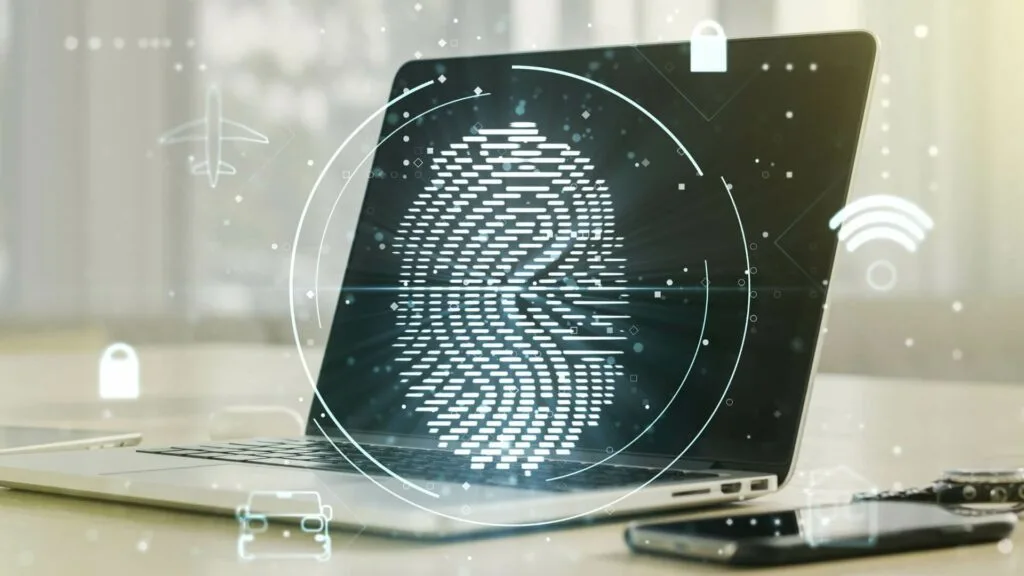Broad connectivity and fast internet speeds brought new inventions that contributed to efficient corporate procedures. Now, organizations utilize Internet services to offer their customers digital services. Digitization promotes corporate growth and enhances user satisfaction for secure and convenient work processing.
Moreover, digital methods assist businesses with user data protection through digital storage and secure their information from ID theft. Criminals are employing newer, more sophisticated ways to commit identity fraud, a crime growing tremendously in digital businesses. Businesses are shifting towards online ID verification methods to mitigate identity theft and system abuse. Know Your Customer (KYC) procedures serve organizations to encounter financial losses and cyber attacks.

What are Digital KYC Verification and ID Authentication Solutions?
Know Your Customer (KYC) verification helps businesses to authenticate their users digitally. It enables financial institutions and other sectors to secure digital work processing for successful business operations. Traditionally, organizations use manual processes to verify their user and employ human efforts to verify user data. Now, technological advancement has contributed to forms of automated work processing and deterred manual efforts for ID verification. Digital KYC verification involves automated cross-match for multi-layered security and assists firms with business scalability worldwide.
Virtual KYC technologies offer effective identity validation solutions and fraud mitigation outcomes and help overcome workload difficulties in organizational processes. KYC online verification solutions reliably identify potential clients of businesses using cutting-edge technology. Companies that want to avoid criminal activity and fines from regulatory agencies follow KYC compliance rules. Guidelines for online KYC compliance ensure companies confirm their clients’ identity and review their prior behavior to prevent scammers from entering the systems.
Digital ID Verification Mechanisms for Successful KYC Compliance
Successful KYC procedures involve various methods to identify user authenticity. The process includes the following stages of verification:
Face Verification
Businesses use advanced authentication checks, such as biometric facial recognition, to comply with KYC regulations. Customers get their faces scanned during this procedure using the same method used for unlocking cell phones. It uses machine learning techniques and AI to analyze distinctive facial traits and make accurate detections.
Document Verification
The most common method of confirming an individual’s identification is document verification. OCR system reads and extracts the necessary data from the client’s identity documents. Customers scan and submit these documents to verify information such as name and birthdate. It then matches these specifics to data gathered and stored in the business database.
Watchlist and Sanctions Check
User data is compared against various checklists to detect their historical criminal activities. Many clients possess high-risk potential and are identified with crime histories. Without comparing against sanctions, firms may give way to criminals on board and suffer heavy financial losses.
Address Verification
The process for online validation of identity combines address verification to examine clients’ backgrounds thoroughly. It is similar to document verification and utilizes automatic cross-checks for user identification. This procedure involves AI determining the authenticity of customers by comparing the addresses on utility bills and driver’s licenses. Businesses can increase their shipment accuracy using the extensive data acquired through address verification. To confirm a client’s identification, freshly input information is compared with previously submitted data in user information.
Anti Money Laundering (AML) Screening
KYC verification provider protects companies and banks against fraud. There are various rules pertaining to AML compliance. These concentrate on the customer accounts and transaction records to look for any involvement in previous financial frauds, including money laundering. Regular clients undergo customer due diligence, and those at high risk undergo an enhanced due diligence procedure. These KYC procedures examine the background information of consumers while also checking for potential political ties.
Biometric Solution for User Identification and KYC Checklist
Along with efficiency, online KYC verification solutions provide clients convenience through simple biometric facial confirmation authentication. It is difficult to hack because biometric data is encrypted and doesn’t require complicated passwords. Customers who use face detection as part of the online KYC process can submit a picture or a video to prove their identity. Clients who choose video verification must appear live via a video link, but customers who go for picture verification only need to submit a snapshot of themselves.
Digital KYC verification systems that accurately detect face traits incorporate technologies including texture analysis, 3D depth perception, and liveness detection. The identification helps to weed out deep fakes, including photoshopped pictures, while texture analysis examines the fine details of a person’s face to detect any adjustments. Similarly, 3D depth perception assesses the contours and distinctive lines.
Final Thoughts
Digitalization has opened up many promising possibilities for organizations. Additionally, it contributes to a rise in identity and financial theft. Suspicious activities severely hamper the operations of financial institutions and other organizations. Thus, online KYC identity verification is crucial for enterprises to succeed in their fight against crime and adhere to regulations.

Jessi is the creative mind behind The Coffee Mom, a popular blog that combines parenting advice, travel tips, and a love for all things Disney. As a trusted Disney influencer and passionate storyteller, Jessi’s authentic insights and relatable content resonate with readers worldwide.
